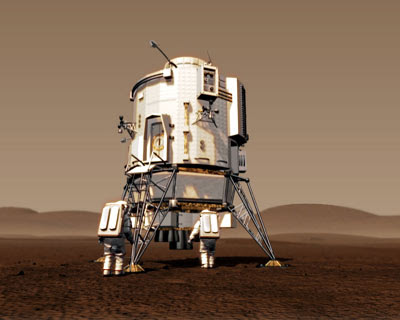A Place to Call Home

Extrasolar 'Earths' are still in the news, for a fairly loose definition of 'Earth'. Thanks to the Kepler mission the news stream of 'Earths' is likely to continue. Upwards of 200 candidates have been identified, most of which will probably not turn out to be false positives.
Surely some of the not-false-positives will orbit within their parent stars' habitable zones, calling for more detailed investigation. We will then search for signs of atmospheric water vapor, and especially oxygen - a substance so unstable and corrosive that its presence in significant quantities probably indicates life, and complex life at that.
Meanwhile, last post's comment thread drifted to a familiar topic in these parts: permanent, large scale human habitation in space. The 'large scale' part, especially, tends to pushes this subject beyond the Plausible Midfuture, which will have its work cut out producing a 'substantial' human population in space.
(Today's persistent space population is six. If it increases by an average 2 percent per year there are a decidedly modest 250 people in space circa 2200; at 3 percent per year some 1500. At 4 percent per year the space population is close to 10,000 people by 2200. Not so shabby, really. But bear in mind that all such compound interest calculations eventually bump up against something.)
Set aside the question of why - other than sheer coolness - we would colonize space at all. Also set aside, for now, those niggly questions about affording it.
An important, under-discussed aspect of space habitats is whether most humans can readily adapt to living in a can - and, if so, how big a can it takes. This issue was first pointed out to me in an email exchange with Matt Picio, a longtime regular at SFConsim-l. It came up again in the last discussion thread.
Putting it a more immediate way, how long can we be comfortable with never going outdoors? And what qualifies psychologically as being outdoors? We already know something about this without having to go into space, as the phrase 'cabin fever' suggests. Experience with nuclear submarines provides a baseline; so does over-winter habitation in Antarctica. But these habitats are on the same order of size as ordinary ships and buildings.
Space habs, intended for long-term occupation, are generally imagined to be at least an order of magnitude larger in sheer size, and an order of magnitude less cramped for their occupants. We do not have any examples on this scale to go by.
In popular imagination there are supposed to be Manhattanites who have no interest in riding the subway to the outer boroughs, let alone visiting the Big Sky Country. (They may or may not exist in any significant numbers.) But Manhattan is not an enclosed can - even its canyon streets are open to the sky. If Manhattan were domed over, would Central Park still feel like a park, or merely an indoor garden?
The question may not be purely a matter of (habitable!) physical space. Parallax depth from our binocular vision becomes 'infinity' at a few hundred meters; other cues (perspective; haze or lack of) can extend this to kilometers. My subjective impression is that mountain cabins on valleys less than a km or two wide feel confined.
Other factors both physiological and psychological could come into play. How rich an ecosystem is required for a healthy variety of smells and sounds?
Does it matter whether we are talking about an O'Neill-esque spacehab or a domed hab on a planetary surface? Does it count as 'going outside' if you have to stay in a vehicle or put on a spacesuit? I have also noticed, during long train rides, that in spite of the spectacular view from the dome car the impulse to step out of the train during station stops becomes very strong.
Presumably these concerns would not arise on a habitable planet, whether naturally so or terraformed. (But can we be completely sure of this?) And they may not matter for gigastructures approaching planetary dimensions, with rich ecosystems to match, and means other than domes or bulkheads to hold in the air.
But the overall point is that long-term human habitability may involve constraints going well beyond those that apply to spaceships that reach their destinations in a few months.
Discuss.
This image of the recent lunar eclipse above the Rocky Mountains comes, as so often, from Astronomy Picture of the Day. And a link to Atomic Rockets, just on general principles.



















